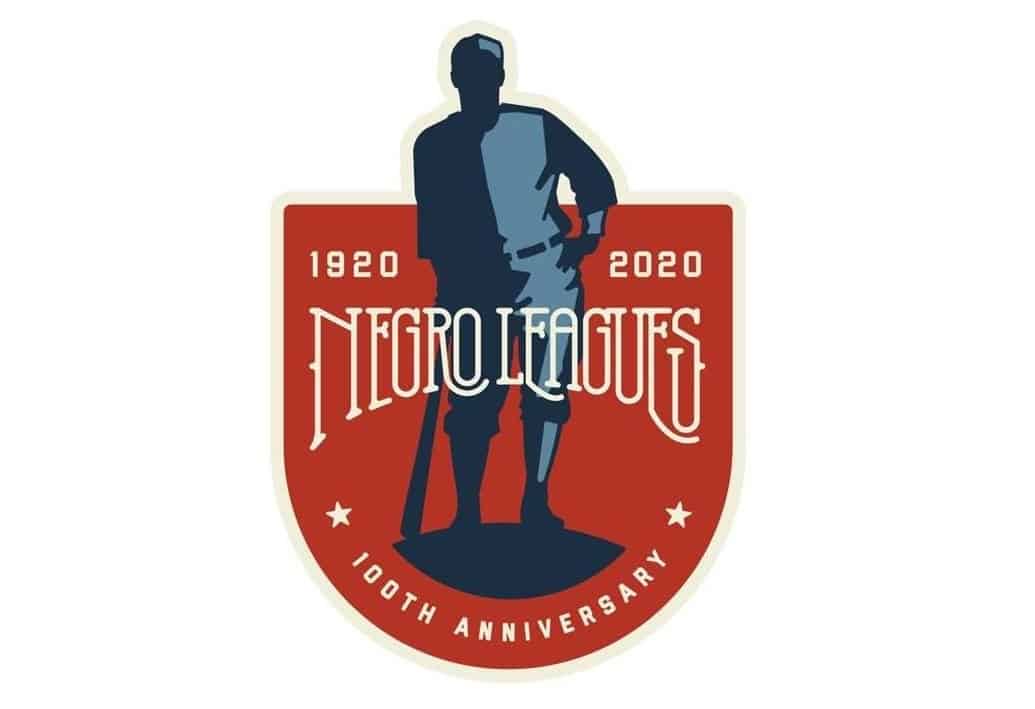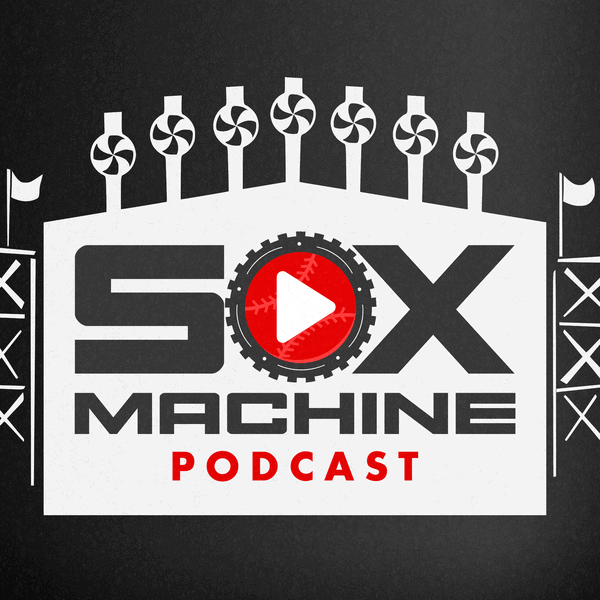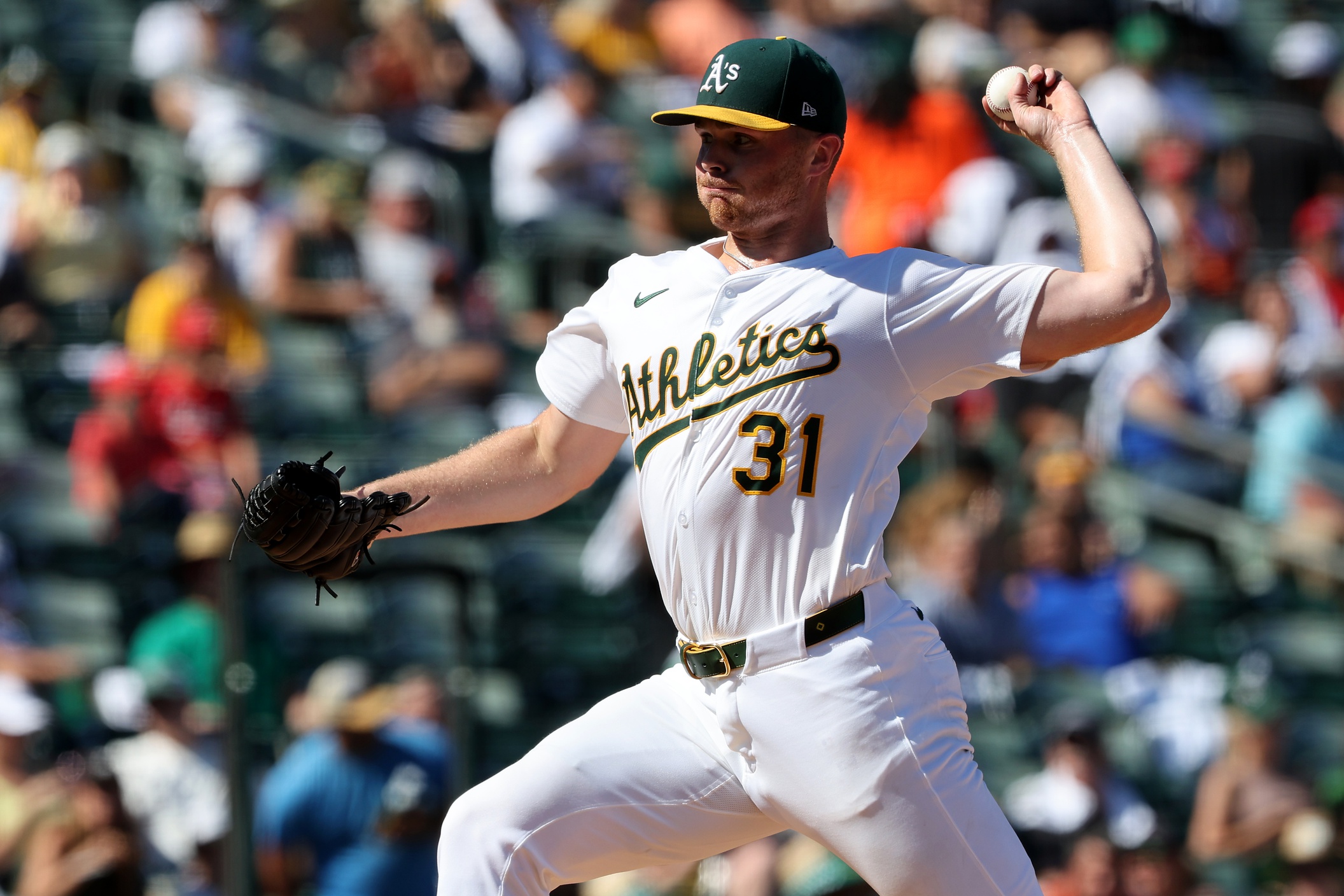The White Sox's biggest regret of the weekend was probably mustering only six hits over 14 innings during their doubleheader loss to the St. Louis Cardinals.
My biggest regret: On the centennial of the founding of the Negro National League, the White Sox weren't wearing American Giants gear.
The Sox themselves weren't derelict in this duty. Looking through all the games on Sunday, the only team to wear Negro Leagues throwbacks were the Miami Marlins, who paid tribute to the semi-pro Miami Giants of the 1930s. It seems like a strange oversight, although perhaps the pandemic and the switch to Nike as an apparel manufacturer made a larger, more cohesive tribute difficult to achieve.
The rest of the league wore the centennial patches seen above, and individual teams and players displayed their own touches. The White Sox prominently featured part of Jason Benetti's interview with Negro Leagues historian Larry Lester before the game, as well as cutouts of Minnie Miñoso, Rube Foster and Ted Radcliffe, the namesake of the annual Double Duty Classic held at 35th and Shields.
But it would've been cool if the White Sox also broke out the white pinstripes of Foster's American Giants, which we last saw in 2016. Chris Sale wore them instead of destroying them, so you know they had to be good.
Embed from Getty Images* * * * * * * * *
While the visual tributes left a little to be desired over the weekend, there's some strong reading material worth your time. The Washington Post's Kevin Blackistone wrote about the league's previous acknowledgments of segregation, and how it prefers to focus on the color barrier breaking, and not enough on how and why the color barrier existed for as long as it did.
Other historians have been even more certain about [Cap] Anson sowing the seeds that created a field of nightmares for hopeful Black baseball players, from which the Negro Leagues eventually sprang. Either way, the National Baseball Hall of Fame in Cooperstown, N.Y., has never seen fit to add Anson’s most indelible mark on its game to his plaque.
I have argued numerous times that it should because this act didn’t just impact baseball. Every other sport followed baseball’s lead as America’s pastime and refused to let the progeny of enslaved Africans participate in its games. Baseball, like sports as a whole, was never a leader in social justice. It was a facilitator in social injustice, and never before has the time so clearly screamed for it to admit as much and edit its narrative.
The Ringer's Ben Lindbergh says Major League Baseball is considering adding the Negro Leagues to their official classifications of "major leagues." That definition is limited to MLB's current leagues, along with the American Association, Union Association, Players' League and Federal League.
There's a legitimate difficulty in contextualizing the data from the leagues -- the shorter, uneven schedules resulting in some extreme performances, which have been incompletely tracked -- but the canonical acceptance of a 60-game MLB season now makes it a lot harder to separate the Negro Leagues on a scientific level. On a philosophical level, it seems doubly punitive to bar Black players from participating in Major League Baseball, then dismiss their best attempt at creating their own playing field as a "minor" endeavor.
Lindbergh delves into the various benefits of such a reclassification, starting with:
The difference that “major” would make might seem semantic, but there would be tangible benefits to the new designation. At Baseball-Reference, the Negro Leagues are grouped with minor leagues and foreign leagues. Forman says that if MLB were to reclassify the Negro Leagues, they would likely join the SBRC-approved leagues on the Leagues page and be included in the site’s major league historical totals. In addition, pages for players who spent time in both the Negro Leagues and the integrated majors would display all of their stats in the same place, without cordoning off the Negro Leagues numbers on a separate tab. The site’s subscription-based Stathead service might also add the option to slice and dice data from Black baseball. Forman says his company would attempt to acquire more comprehensive Negro Leagues records, and perhaps help fund further research.
That's a bigger deal than it seems, especially for one player near and dear to White Sox fans -- one Saturnino Orestes Armas "Minnie" Miñoso.
Miñoso's official major-league ledger shows that he finished with a career average of .298, and 1,963 hits. Neither of those numbers include Miñoso's work with the New York Cubans from 1946 through 1948, and it results in a sizable gap in perception.
Without any knowledge of the color barrier, Miñóso's B-Ref page says he's a guy who established himself in the majors at 25, which was maybe a little too late to generate the dynamic peak required to carry him into Cooperstown. Chase Utley could have the same problem when he appears on the ballot.
But Chase Utley wasn't systemically prohibited from participating in Major League Baseball. Minõso was. How can the league make sure that story is understood as simply as possible? Well, if you incorporate his Negro Leagues stats from the Seamheads database, you now see a guy who batted .314/.370/.479 from ages 20-22. Those stats maybe aren't as contextually sturdy as American League stats from those years would be, and he still suffers from an interruption between New York and Cleveland, but at least the exclusion of Miñoso is sitting there for all to see. And if those stats are included, Miñoso is now over 2,000 major-league hits. His career average is an agonizing .29949, but he would've been a career .300 hitter at the time of his first retirement.
It's not like any of those small modifications should make him a Hall of Famer, because he should've been enshrined already. His case is just representative of what's missing from a player's record when the Negro Leagues are treated as something less than major, especially before the color barrier had been dismantled across Major League Baseball.
As always, consider a donation or membership to the Negro Leagues Baseball Museum.






